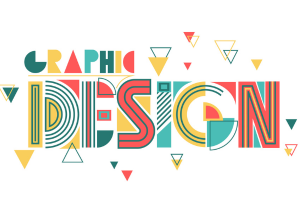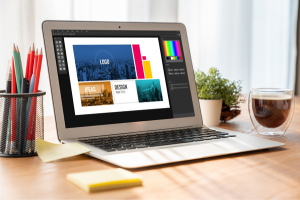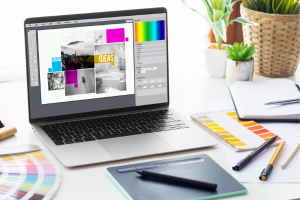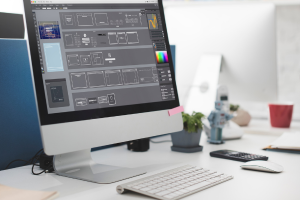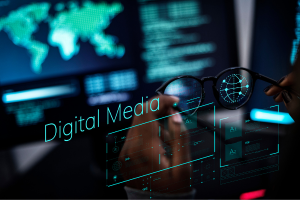In the short-evolving landscape of branding, emblems stay at the coronary heart of how organizations present themselves to their audiences. For clients in search of brand layout services inside the United States, staying ahead of the curve is important. As we move in addition into 2025, numerous trends are rising that mirror technological development, cultural shifts, and evolving aesthetics. Let’s explore the main logo layout developments that U.S. Manufacturers and designers ought to watch — and probably undertake — this year.
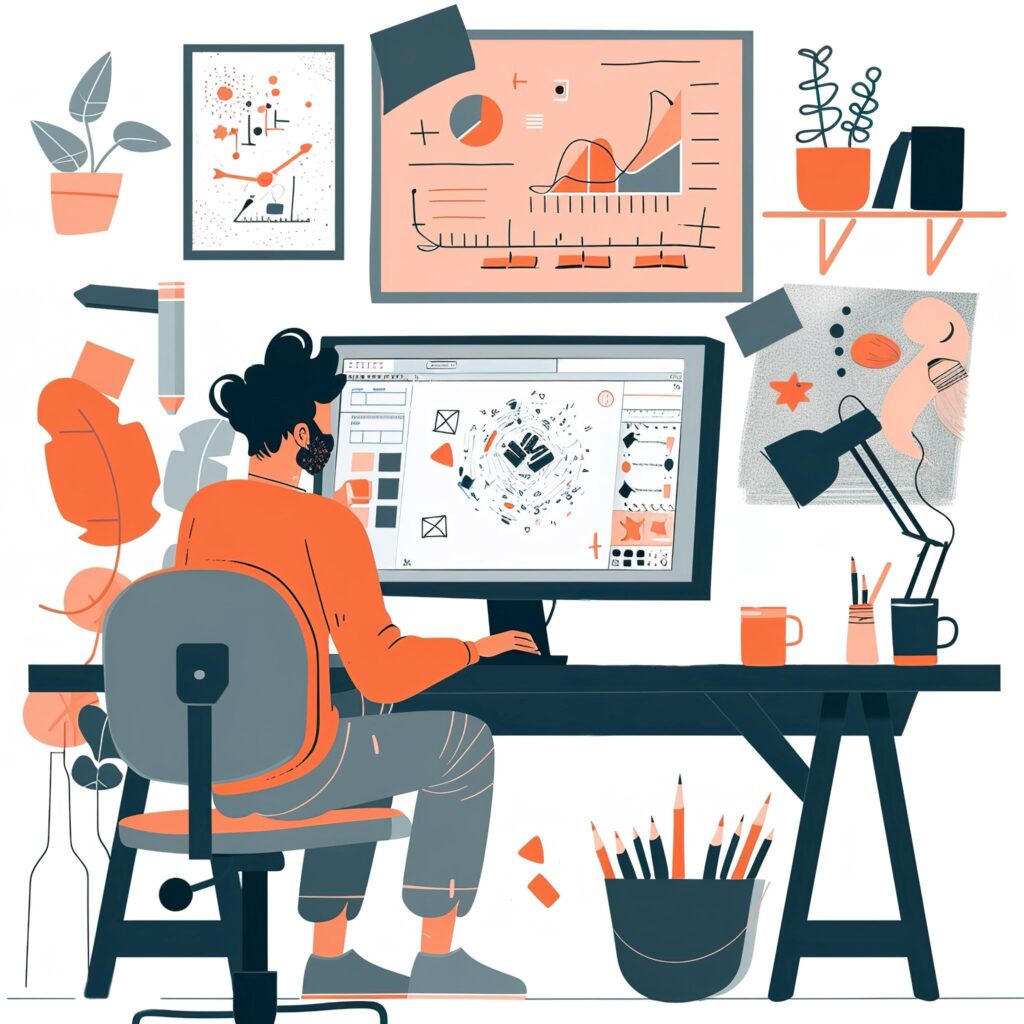
1. Bold Minimalism — Less Is More (But Make It Strong)
Minimalist designs have long been popular in brand work; however, in 2025, they’re gaining renewed force through boldness. Instead of sensitive line work or extremely sparse icons, designers are favoring strong, easy forms with commanding presence. Think massive, smooth geometric shapes, heavy-weight sans fonts, and high evaluation coloration palettes.
This technique facilitates emblems live legible across several contexts — from cellular apps to hoardings — a need inside the digital-first surroundings U.S. Brands often perform in. The key is to strip away superfluous elements; however, no longer a character. A minimal brand that’s too bland received’t stand out.
2. Depth, Layering & Subtle 3D Effects
While flat design ruled in the last decade, 2025 has seen a resurrection of depth, layering, and subtle three-dimensionality. Designers use gradients, shadows, overlapping shapes, and mixed layers to create visual wealth without returning to heavy skeuomorphism.
This trend lets logos feel tactile and dynamic without losing modern simplicity. In contexts such as websites, video intros, and appspread screens, layered logos help capture attention and give a sense of movement.
3. Dynamic / Adaptive Logos
Static logos of a size that fit everyone are challenged by dynamic identity systems, versions of logos that change, morphic, or adapt to their context. For example, a full print icon version, a simplified “Icon” form for app icons, or a responsive logo that reorganizes on narrow screens.
American brands especially benefit from this flexibility: When a company needs to show brand identity on advertising boards, social media, small screen capabilities, and goods, it ensures a dynamic system texture and adaptability.
4. Expressive Typography & Custom Lettering
Typography is back in the spotlight. Instead of relying exclusively on existing font families, many new logos have customized letters, hand-drawn scripts, or expressive type that reflects personality.
This trend makes a brand more memorable – the type itself becomes a visual asset, not just a vehicle for a name. In the United States, where the market is saturated, having a peculiar typographic treatment can help differentiate a brand.
5. Nature-Inspired & Eco-Conscious Themes
As sustainability and environmental awareness grow in significance, logos take on natural aesthetics: organic lines, leaf shapes, earthly colors, and textures that reflect natural materials. This design direction signals authenticity and is in line with consumers’ growing expectations of environmentally friendly employees.
In the United States, where many consumers prefer brands that show organic sensitivity, these natural-affected logos are particularly effective for well-being, food and drink, outdoor products, and non-profit organizations.
6. Retro / Nostalgic Futurism
Logos that combine retro elements with a touch of futurism make a comeback. This “retro-phuturistic” aesthetics can combine classic serif typography or vintage color palettes with modern gradients, holographic effects, or abstract forms.
Result: A well-known emotional resonance with fresh energy. This trend is particularly well-suited for American brands that want to maintain their heritage while remaining future-oriented.
7. Metallic and hollow textures
Shiny, metallic designs and holographic effects are gaining popularity, especially in digital branding. Think chrome, silver gradients, hologram-like glitter, or subtle iridescence.
These finishes, when used in a good way, can make a logo feel premium and modern. In fields such as technology, beauty, entertainment, or fashion, such textures may indicate high-end or innovative features.
8. Pixel / Digital Aesthetic & Glitch Effects
Given digital dominance in branding, pixelation, distortion of glitch style, and online structures enters Logo design enters. These effects can be used subtly (for example, as textures or details) or more boldly (for example, as the main form of a logo) to develop technology, digital culture, or an appealing aesthetics.
For us, technological start-ups or brands of digital spin, this trend can communicate a “digital-first” identity.
But caution: The effect should remain legible and not complicate the design, especially in smaller sizes.
9. Monochrome & Limited-Palette Logos
While color is still important, many designers explore very limited palettes – even monochrome – to create strong, iconic brands. By removing color addiction, logos become more versatile while maintaining their identity (for example, when printed in a color, embossed, or used as line art).
A well-designed monochrome logo that works in black and white or a single color symbolizes strength. Many US companies may require this flexibility when searching for logo design services in the United States when considering where the logo will appear.
10. Symbolic Storytelling & Hidden Meanings
Increasingly, logos are designed to tell stories – built into symbolism, narrative, or hidden elements that are activated upon closer inspection. The idea is not just identifying a brand, but to highlight an emotional or thematic narrative.
This can take the form of an illusion of negative rooms, a visual metaphor, or an integrated symbol. For American consumers who are used to rich visual culture, a logo that reveals more over time can elaborate on commitment and be memorable.
Why These Trends Matter for Logo Design Services in the United States
Competitive Discrimination
The US market is saturated with almost all industries. A trend-expert logo can help a new or redirected business stand out.
Requests for multiple platforms
People now have to work with mobile apps, websites, social media, printing, signage, and goods. Trends such as adaptive logos, minimalist boldness, and versatile palettes create more sustainable design systems.
consumer expectations
US consumers are increasingly looking for brands that reflect authenticity, environmental values , and visual innovation. Logos that reflect these values help you bridge the brand lift and visual identity.
Long life and scalability
A logo in line with 2025 trends, but still flexible and basic, may remain relevant for years with only minor changes, reducing the need for frequent redesign.
Tips for Implementing These Trends—Safely
Don’t chase every trend. Trends are tools, not rules. Implement what the brand story represents.
Test readability in smaller sizes. Some effects (gradients, shadows, textures) may appear distorted in smaller or single -colored versions.
Design in vector and provide several formats. Make sure your logo is clean in digital, printed, and specific contexts.
Maintain original identity. When exploring trends, retain brand personality and unique character – do not let the style overpower the fabric.
Plan for the brand system. Think beyond the logo – how can typography, color, illustration, or movement improve recognition?
Conclusion
2025 is set to be a year of sophisticated courage, intelligent flexibility, and narrative design in the logo creation. Whether you are a US company, whether it is a start-up, a regional brand, or an established enterprise, incorporating the right trends into your visual identity can make a significant difference.
If you are looking for logo design services in the United States and want a logo that is both updated and timeless, it is now time to work with a designer or agency familiar with these new trends. Well-thought-out out well-designed logo – one that mixes form, history, and purpose – will lay the foundation for a brand identity that resonates deeply and goods.


